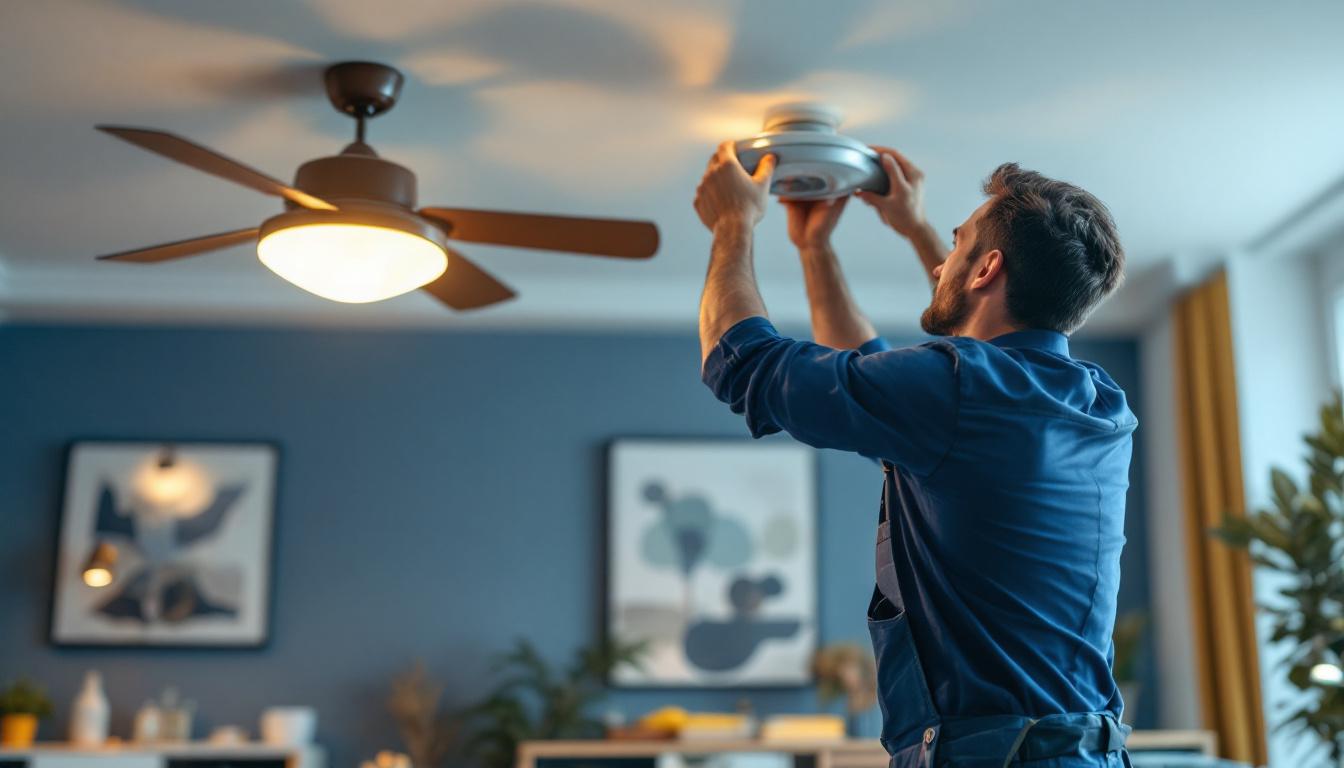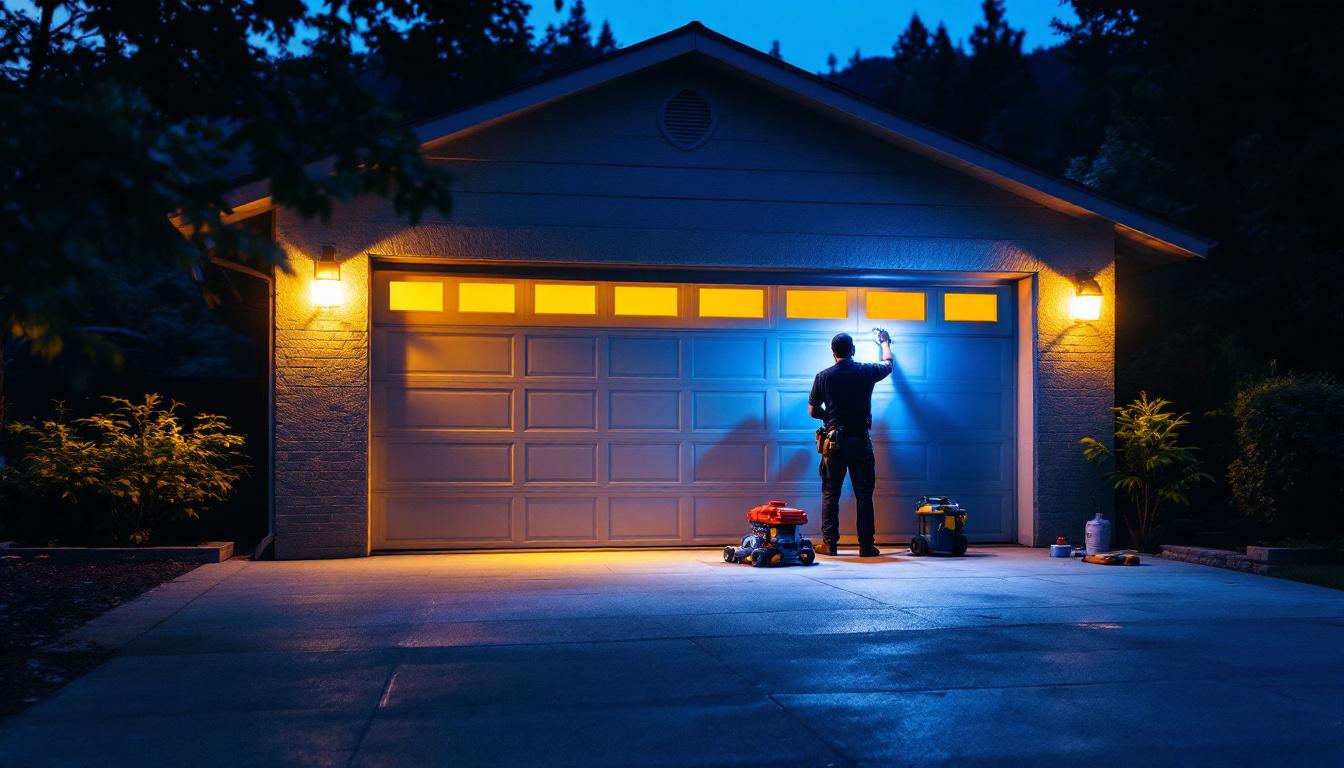
In the realm of residential and commercial lighting, understanding the interplay between fans and lights is essential for any lighting contractor. This guide delves into the nuances of integrating fans with lighting fixtures, ensuring optimal functionality and aesthetic appeal. By mastering this integration, contractors can elevate their projects, providing clients with comfort and style.
Before diving into the technical aspects of fan and light integration, it is crucial to grasp the fundamental principles that govern their operation. Fans and lights serve distinct purposes, yet they can complement each other effectively when designed and installed correctly.
Ceiling fans are primarily designed to circulate air, providing comfort in both warm and cool climates. They can help reduce energy costs by allowing homeowners to set their thermostats higher in the summer and lower in the winter. Understanding the airflow patterns and the specific needs of a space is vital for selecting the appropriate fan. Additionally, modern ceiling fans often come equipped with energy-efficient motors and smart technology, enabling users to control speed and direction via mobile apps or voice commands. This level of control not only enhances comfort but also contributes to energy savings, making ceiling fans a sustainable choice for many households.
Lighting fixtures, on the other hand, serve to illuminate spaces, enhancing visibility and setting the mood. The choice of lighting can significantly impact the ambiance of a room. Different types of fixtures, such as chandeliers, recessed lights, and pendant lights, offer various lighting effects and styles. A contractor must consider the purpose of the room and the desired aesthetic when selecting lighting options. Moreover, the advent of LED technology has revolutionized lighting design, providing options that are not only energy-efficient but also available in a wide range of color temperatures. This versatility allows homeowners to customize their lighting to suit different activities, from bright task lighting in kitchens to soft, warm tones for cozy living spaces.
The integration of fans and lights should not only focus on functionality but also on aesthetics. A well-designed ceiling fan with integrated lighting can serve as a focal point in a room, while also providing practical benefits. Contractors should be aware of the latest design trends and technological advancements to offer clients innovative solutions. For instance, many contemporary fans feature sleek designs with minimalist lines, seamlessly blending into modern decor. Additionally, the use of smart home integration allows for the synchronization of lighting and fan operations, creating a cohesive environment that enhances the overall living experience. As homeowners increasingly seek personalized spaces, the combination of stylish fans and versatile lighting solutions can elevate the design of any room, making it both functional and visually appealing.
Selecting the right fans and lighting fixtures is crucial for successful integration. The market offers a plethora of options, and understanding the features and benefits of each can help contractors make informed decisions. With the right combination, not only can the aesthetic appeal of a space be enhanced, but functionality and comfort can also be significantly improved.
Ceiling fans come in various styles and sizes, each suited for different applications. For instance, flush mount fans are ideal for rooms with low ceilings, while larger spaces may benefit from more powerful models. Additionally, some fans are designed for outdoor use, featuring materials that resist moisture and corrosion. Beyond just aesthetics, the choice of fan can also influence air circulation, which is essential for maintaining a comfortable indoor climate. For example, fans with reversible motors can help circulate warm air in the winter and cool air in the summer, making them a versatile choice for year-round comfort.
When it comes to lighting, there are several options available for integration with ceiling fans. Many modern ceiling fans come with built-in light kits, which can include LED bulbs for energy efficiency. These light kits can vary in design, from sleek and minimalist to ornate and decorative, allowing for personalization based on the room’s decor. Alternatively, contractors can choose to install separate lighting fixtures that complement the fan’s design, ensuring a cohesive look. This approach not only enhances the overall aesthetic but also allows for greater flexibility in lighting placement and intensity, catering to different activities and moods within the space.
Energy efficiency is a significant factor in today’s market, with many clients seeking sustainable solutions. Selecting ENERGY STAR-rated fans and LED lighting can help reduce energy consumption and costs. Contractors should educate clients on the long-term benefits of these products, emphasizing both environmental impact and savings. Moreover, incorporating smart technology into fans and lighting systems can further enhance energy efficiency. Smart fans can be controlled via mobile apps or voice commands, allowing users to adjust settings based on their preferences and schedules. This not only contributes to energy savings but also adds a layer of convenience that modern homeowners appreciate.
Proper installation is critical to ensure the safety and functionality of both fans and lights. Following best practices can prevent common issues and enhance the overall performance of the systems.
Before installation, it is essential to assess the electrical system in the home or building. This includes checking the wiring, ensuring it can handle the load of both the fan and light fixtures. It may also be necessary to install a dedicated circuit for larger fans or complex lighting systems.
Correct mounting techniques are vital for the stability and safety of ceiling fans. Fans should be mounted securely to a ceiling joist or a fan-rated box to prevent wobbling or falling. Additionally, ensuring that the fan is at the proper height from the floor is essential for optimal airflow and safety.
After installation, thorough testing is necessary to ensure everything functions correctly. This includes checking the fan’s speed settings, light dimming capabilities, and remote control functions if applicable. Adjustments may be needed to optimize performance, such as balancing the fan blades or aligning light fixtures.
Design plays a crucial role in the integration of fans and lights, influencing both functionality and aesthetics. Contractors must consider various design elements to create a harmonious environment.
When selecting fans and lights, it is essential to match the style and theme of the space. For instance, a modern minimalist room may benefit from sleek, simple designs, while a traditional space might call for ornate fixtures. Understanding the client’s vision and the overall decor will guide the selection process.
The color temperature of lighting can significantly affect the mood of a room. Warmer tones create a cozy atmosphere, while cooler tones can enhance focus and energy. Additionally, the brightness of the fixtures should be appropriate for the space, ensuring adequate illumination without being overpowering.
In larger spaces, creating zones with different lighting and fan configurations can enhance functionality. For example, a living room may have a central fan with dimmable lights for relaxation, while task lighting is added in reading corners. This zoning approach allows for flexibility and caters to various activities within the same space.
Dust and debris can accumulate on fan blades and light fixtures, affecting performance and aesthetics. Regular cleaning is necessary to maintain efficiency and appearance. Contractors should recommend appropriate cleaning methods and products to clients, ensuring they understand how to care for their installations.
Contractors should be familiar with common issues that may arise with fans and lights, such as flickering bulbs, noisy fans, or inadequate airflow. Identifying these problems early can save clients time and money in repairs. Providing clients with troubleshooting tips can empower them to address minor issues independently.
While many issues can be resolved with basic troubleshooting, some situations require professional intervention. Educating clients on when to seek help, such as for electrical problems or complex repairs, can prevent safety hazards and ensure proper resolution of issues.
The lighting and ceiling fan industry is continually evolving, with new trends emerging that can enhance the integration of these elements. Staying informed about these trends can help contractors offer cutting-edge solutions to clients.
Smart home technology has revolutionized the way fans and lights are controlled. Many modern fans and lighting fixtures can be integrated with smart home systems, allowing for remote control and automation. Contractors should be knowledgeable about these technologies to provide clients with the latest options for convenience and efficiency.
As sustainability becomes increasingly important, eco-friendly products are gaining popularity. This includes energy-efficient fans and lighting, as well as materials sourced from sustainable practices. Contractors can appeal to environmentally conscious clients by offering these options, showcasing their commitment to sustainability.
Customization is a growing trend in both fans and lighting. Clients are looking for unique solutions that reflect their personal style and preferences. Contractors who can offer bespoke designs or modifications can stand out in a competitive market, providing clients with truly one-of-a-kind installations.
Integrating fans and lights is a multifaceted process that requires a deep understanding of both functionality and design. By mastering the principles outlined in this guide, lighting contractors can enhance their skill set, providing clients with exceptional solutions that elevate their spaces. Whether through careful product selection, expert installation, or staying abreast of industry trends, contractors can ensure their projects stand out in a crowded marketplace.
Ultimately, the goal is to create environments that are not only visually appealing but also comfortable and efficient. By focusing on the seamless integration of fans and lights, contractors can meet and exceed client expectations, paving the way for successful projects and satisfied customers.
Ready to take your lighting projects to the next level? At LumenWholesale, we provide lighting contractors like you with the highest quality, spec-grade lighting products at prices that can’t be beaten. Say goodbye to local distributor markups and hello to a vast selection of reliable, high-performance lighting that meets the most rigorous industry standards. With the added convenience of free shipping on bulk orders, LumenWholesale is your go-to source for premium lighting solutions that combine quality, affordability, and convenience. Elevate your lighting game and give your clients the exceptional results they deserve. Discover Wholesale Lighting at the Best Value today and make every project shine.

Discover what sets top lighting contractors apart in outdoor garage lights LED installation.

Discover how investing in professional lighting contractors for your front porch can illuminate more than just your home.

Discover why LED can light replacements are crucial for lighting contractors.

Discover expert insights on selecting and installing under-the-counter strip lights with ease.